-
Missouri schools underprepared for pandemics, bioterrorism, natural disasters
Pandemic preparedness is not only critical because of the threat of a future pandemic or an outbreak of an emerging infectious disease, but also because school preparedness for all types of disasters, including biological events, is mandated by the U.S. Department of Education. Missouri schools are no more prepared to respond to pandemics, natural disasters, and bioterrorism attacks than they were in 2011, according to a new study. Particular gaps were found in bioterrorism readiness — less than 10 percent of schools have a foodservice biosecurity plan and only 1.5 percent address the psychological needs that accompany a bioterrorism attack.
-
-
History shows more big wildfires likely as climate warms
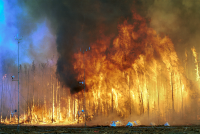
The history of wildfires over the past 2,000 years in a northern Colorado mountain range indicates that large fires will continue to increase as a result of a warming climate, according to a new study. Researchers examined charcoal deposits in twelve lakes in and near the Mount Zirkel Wilderness of northern Colorado, finding that wildfires burned large portions of that area during a documented spike in temperatures in North America starting about 1,000 years ago. That period, known as the Medieval Warm Period (MWP), lasted about 300 years, when temperatures rose just under 1 degree Fahrenheit.
-
-
Eight dead, thousands stranded as South Carolina hit by “once in a millennium” floods
In what Governor Nikki Haley described as a “once-in-a-millennium” flood, a downpour has inundated large parts of South Carolina, causing at least eight deaths. By early Sunday, the storm had dumped more than eighteen inches of rain in parts of central South Carolina, and the state climatologist forecast another 2 to 6 inches through Monday as the rainfall began to weaken. After state police and emergency crews had to rescue hundreds of motorists and passengers from vehicles which stalled in high water, Haley announced all interstate highways in and around Columbia would be closed, and ordered to deployment of 600 national guardsmen to help with rescues and evacuations.
-
-
Government climate pledges, if implemented, would warm world by 2.7°C
The combination of government climate action plans – or Intended Nationally Determined Contributions (INDCs) — if implemented, would bring global warming down to 2.7°C, according to a new analysis. This is the first time since 2009, when the Climate Action Tracker (CAT) began calculating temperature estimates from climate action pledges, that projected warming has dipped below 3°C.
-
-
Storms after wildfire degrade water quality
About half of the water supply in the southwestern United States is supplied by water conveyed from forests, which generally yield higher quality water than any other land use. However, forests are vulnerable to wildfire; more than twelve million acres of land, including important forested water-supply watersheds, have burned in the southwestern United States in the past thirty years. Wildfires increase susceptibility of watersheds to both flooding and erosion, and thus can impair water supplies.
-
-
The West is on fire – and the US taxpayer is subsidizing it
The western United States is burning. This year’s damaging experience is just the latest in a recent series of devastating wildfire seasons, a trend that will only likely increase over the coming years. There are two main reasons behind the growing conflagrations. The first is the legacy of fire suppression polices that snuff out fires as they appear, but leads to the build-up of fuel that is the raw material for larger, more devastating fires. The second is climate change, which is making the West hotter and drier. The higher temperatures wick away moisture from the trees, making them more combustible. The combination of more combustible material and a hotter, drier climate leads to more fires. A number of economic practices and social issues, however, are exacerbating our forest fire problems – chief among them is the enlargement of what is known as the wildland-urban interface (WUI). More people are building homes in the interface close to the wildlands and forests. The full costs of having more people moving into areas subject to greater risk of fire are not borne by these local actors. The federal government picks up between one-half and two-thirds of the cost of protecting people and property in the WUI by providing financial and technical assistance to states and volunteer firefighters. In effect, the federal government, the U.S. taxpayer, picks up the tab. We are on an unsustainable path as the WUI continues to grow and expand, fuel buildup continues and the climate warms. The risk of fire is increasing. But the WUI continues to expand. The U.S. taxpayer should not be subsidizing and underwriting such risky behavior.
-
-
Flood risk for New York City, New Jersey coast rising
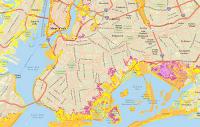
Flood risk for New York City and the New Jersey coast has increased significantly during the last 1,000 years due to hurricanes and accompanying storm surges. For the first time, researchers compared both sea-level rise rates and storm surge heights in prehistoric and modern eras and found that the combined increases of each have raised the likelihood of a devastating 500-year flood occurring as often as every twenty-five years. “A storm that occurred once in seven generations is now occurring twice in a generation,” says one of the researchers. What does that mean for residents along the New York/New Jersey coast? “An extra 100,000 people flooded in the region during Hurricane Sandy who would not have flooded if sea level had not been rising,” the researcher says of the 2012 storm.
-
-
Partnering to build climate change resiliency
South Florida ranks as the world’s most vulnerable urban region because of the large number of assets exposed to the effects of sea level rise. To build climate change resiliency, the Federal Emergency Management Agency (FEMA) partnered with Florida International University (FIU) to provide local community leaders with the knowledge and tools to assess and improve their capabilities to prevent, mitigate, respond to, and recover from climate impacts, including sea level rise, drought and wildfires, heatwaves, floods, powerful storms, and other hazards.
-
-
Hurricane lessons: Lamar U has developed contingency plans for its contingency plans
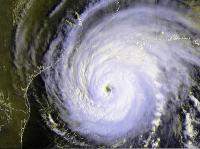
The idea of a contingency plan for a contingency plan would strike most people as somewhat silly, and most others as wasting time in a situation where time is a critical. For some time, the military has taught that when disaster strikes, the most effective means of calming one’s self is to perform a routine act, such as tying one’s shoe lacing, grading papers, or, in the case of the military, cleaning a weapon. The objective is to settle down in order to make a rational evaluation of the situation, and plan accordingly. The leaders of Lamar University, in Beaumont, Texas, reached the same conclusions after Hurricane Rita came roaring through the campus, and the university was sent reeling from $50 million in damage from the storm, which exposed the shortcomings of the school’s preparedness plans.
-
-
Climate change consensus extends beyond climate scientists
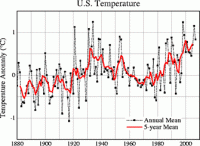
A survey of nearly 700 scientists from nonclimate disciplines shows that more than 90 percent believe that average global temperatures are higher than pre-1800s levels and that human activity has significantly contributed to the rise. The study is the first to show that consensus on human-caused climate change extends beyond climate scientists to the broader scientific community. Previous studies have shown that about 97 percent of actively publishing climate scientists believe in human-caused climate change, and a review of scientific literature on the existence of climate change indicated that about 97 percent of studies affirm climate change is happening.
-
-
Teams of computers and humans more effective in disaster response
Crisis responders need to know the extent of a natural disaster, what aid is required and where they need to get to as quickly as possible — this is what’s known as “situation awareness.” With the proliferation of mass media, a lot of data is now generated from the disaster zone via photographs, tweets, news reports and the like. With the addition of first responder reports and satellite images of the disaster area, there is a vast amount of relevant unstructured data available for situation awareness. A crisis response team will be overwhelmed by his data deluge — perhaps made even worse by reports written in languages they don’t understand. But the data is also hard to interpret by computers alone, as it’s difficult to find meaningful patterns in such a large amount of unstructured data, let alone understand the complex human problems that described within it. Experts say that joint humans-computers teams would be the best way to deal with voluminous, but unstructured, data.
-
-
Florida universities are national hub for hurricane mitigation research
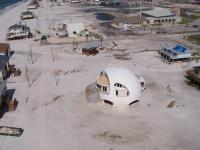
The National Science Foundation the other day announced grants to Florida International University and University of Florida totaling nearly $8 million that will position the state to become a national hub for research into making homes and businesses safer in hurricanes and tornadoes.
-
-
The Philippine islands should brace for the Big One: Scientists
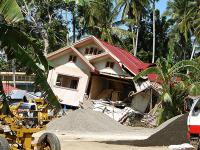
Seismologists say the Philippines should prepare for an 8.5 quake soon. The quake will be triggered by the West Valley Fault, which is a long fault running under six major cities. The scientists estimate the death toll will reach 34,000, about 4,615 kilometers of water distribution pipes will suffer 4,000 points of breakage. Thirty kilometers worth of electric cables will be cut and 95 kilometers of communication cables will be disconnected.
-
-
Rising seas, bigger storms may greatly magnify U.S. East Coast floods
Over the past century, the East Coast has seen sea-level rise far above the 8-inch global average — up to a foot in much of the Mid-Atlantic and Northeast, including New York City. Many studies predict that future sea-level rise along the U.S. Atlantic and Gulf coasts will increase flooding. Others suggest that the human-caused warming driving this rise will also boost the intensity and frequency of big coastal storms. Up to now, though, these two hazards have been assessed mostly in isolation from each other. Now, a new study quantifies how they could interact to produce alarming spikes in the combined height and duration of flooding. It projects that coastal flooding could possibly shoot up several hundredfold by 2100, from the Northeast to Texas.
-
-
El Niño, La Niña will exacerbate coastal hazards across entire Pacific
The projected upsurge of severe El Niño and La Niña events will cause an increase in storm events leading to extreme coastal flooding and erosion in populated regions across the Pacific Ocean, according to a multi-agency study. The impact of these storms is not presently included in most studies on future coastal vulnerability, which look primarily at sea level rise. New research data, from forty-eight beaches across three continents and five countries bordering the Pacific Ocean, suggest the predicted increase will exacerbate coastal erosion irrespective of sea level rise affecting the region.
-
More headlines
The long view
The Surprising Reasons Floods and Other Disasters Are Deadlier at Night
It’s not just that it’s dark and people are asleep. Urban sprawl, confirmation bias, and other factors can play a role.
Why Flash Flood Warnings Will Continue to Go Unheeded
Experts say local education and community support are key to conveying risk.
